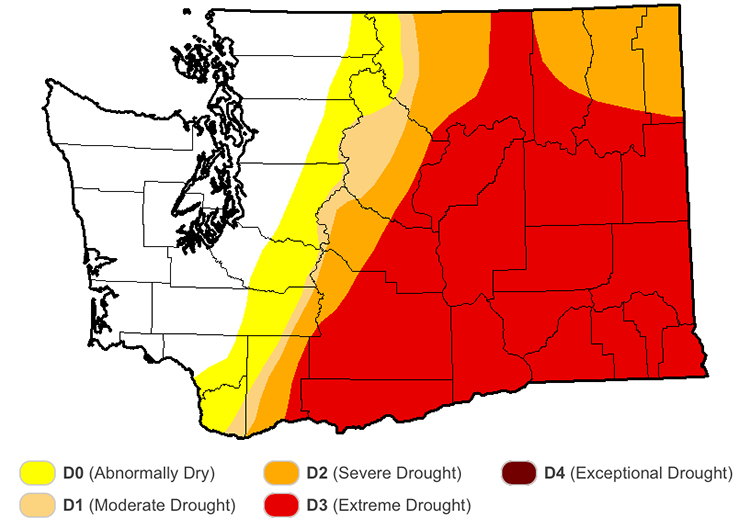What a difference one week can make… the cities of Everett, Seattle and Tacoma have finally deactivated their Water Shortage Response Plan… thanks to the ongoing shift in our weather pattern that has saturated the ground, filled reservoirs, and generally reset the region’s water supply.
 Past week’s precipitation in the Cedar River and South Fork Tolt River Watersheds
Past week’s precipitation in the Cedar River and South Fork Tolt River Watersheds
Last week, 3.47 inches and 1.44 inches of precipitation were recorded in our Cedar River and South Fork Tolt River watersheds, respectively.
In our previous blog post, we cited the The South Fork Tolt Reservoir at the South Fork Tolt Dam (one of our two main sources of water) as an example of the ongoing water shortage. Thankfully its levels are now only 1.7 feet below long term average.
When combined with the new levels at Chester Morse Lake at the Overflow Dike (which is now approximately 7.7 feet above its long term average from 1989 to 2005), and Masonry Pool Reservoir at Masonry Dam (which is now about 11.1 feet above its long term average), our combined reservoir water storage has taken a dramatic positive leap as depicted in the chart below:
 The combined reservoir storage of Chester Morse Lake, Masonry Pool Lake Youngs, and South Fork Tolt Reservoir is above the long term average for this time of year.
The combined reservoir storage of Chester Morse Lake, Masonry Pool Lake Youngs, and South Fork Tolt Reservoir is above the long term average for this time of year.
How Does this Compare to the Situation in Eastern Washington?
Unfortunately, extremely dry conditions persist in Eastern Washington. This is a particular hardship for dry land wheat farmers who rely on adequate soil moisture for their winter crops.
Although recent rains improved reservoir storage, the Yakima basin irrigation reservoirs remain well below capacity, as shown in this diagram. Should El Niño result in higher than normal temperatures and below normal snowpack, there may not be adequate supplies to fill the reservoirs.
Senator Cantwell is continuing to push legislation to bring drought relief and resilience for farmers and communities in the Yakima Basin—one of Washington’s most productive agricultural regions.
Think Snowpack in Eastern Washington!
Washington State Drought Conditions as of Nov. 24, 2015; courtesy of the U.S. Drought Monitor website:

